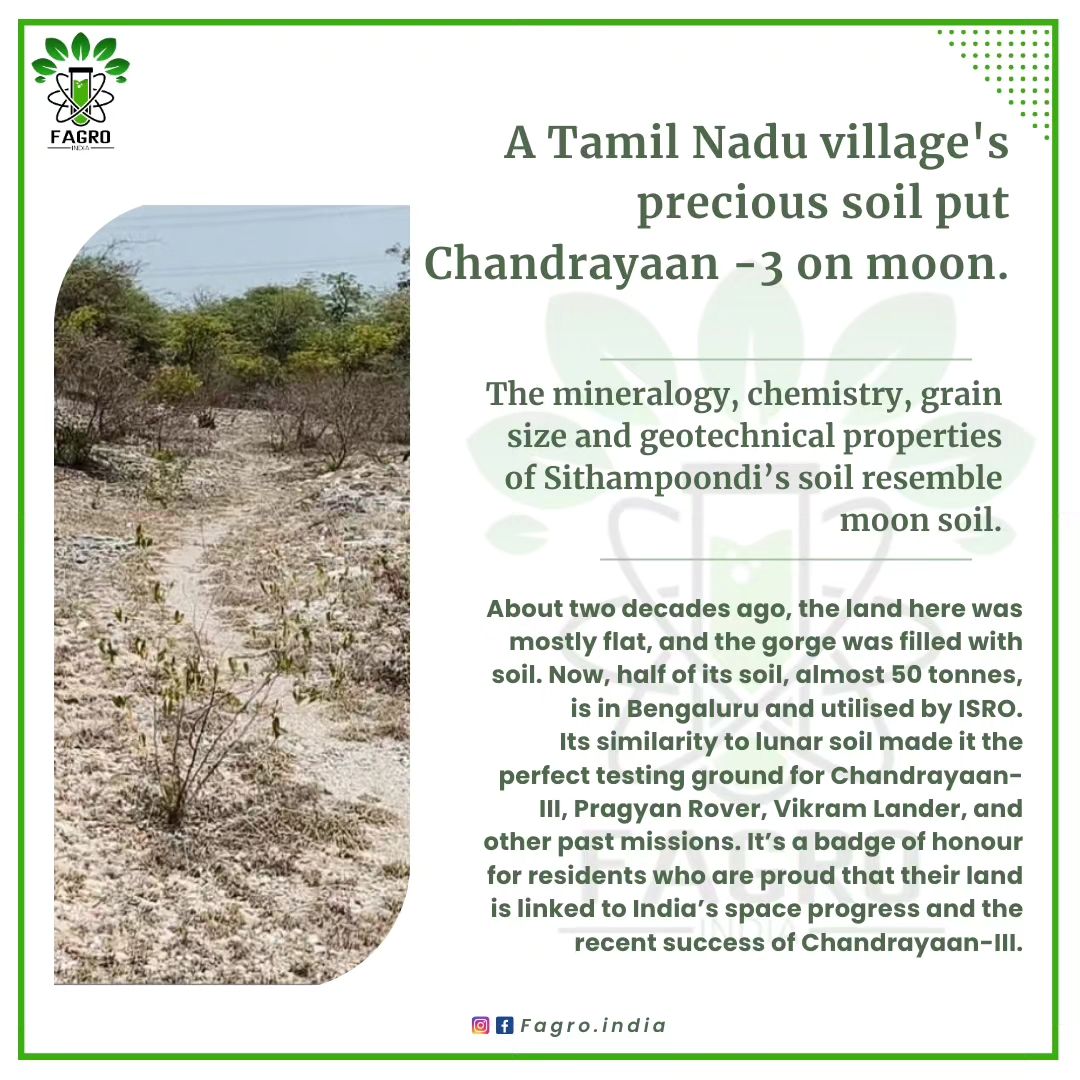Anbazhagan, professor and head of the geology department at Periyar University in Salem, found that Sittampoondi’s soil was similar to that on the Moon’s south pole.
It turned out to be a fortuitous—and cost-saving discovery. India’s soil scientists approached Anbazhagan after the Chandrayaan-I mission in 2008. They wanted suggestions on what soil they could use to test future missions. They needed large quantities of moon-like soil to conduct landing experiments.
Until then, ISRO purchased a few kilograms of such soil from NASA. But each kilo cost $150, and that was back in 2008-09, says Anbazhagan. Importing large quantities of soil would have increased project costs by another Rs 40-50 crore.
#funfacts #agriculturenews #agriculturefacts #india #aboutindia #indiafacts #factsandinformation #funfactsindia #india #bharat

